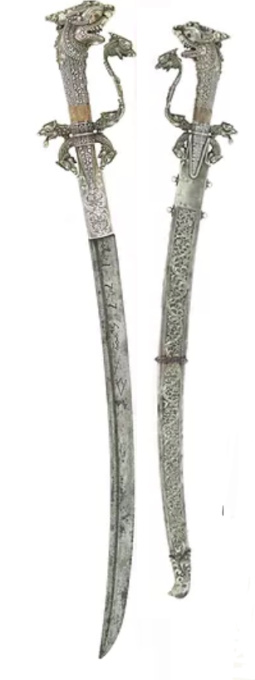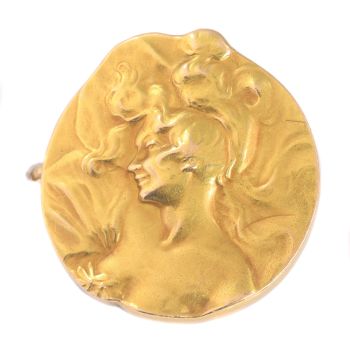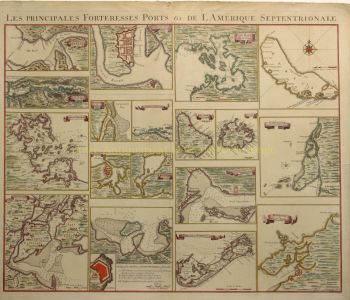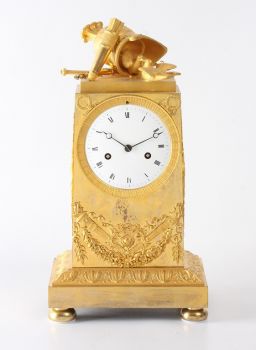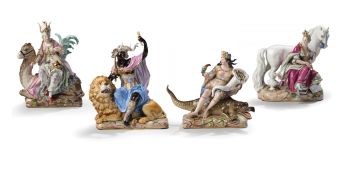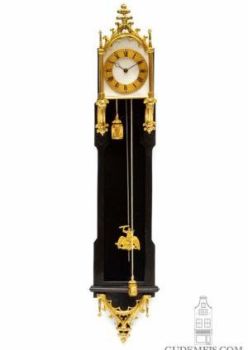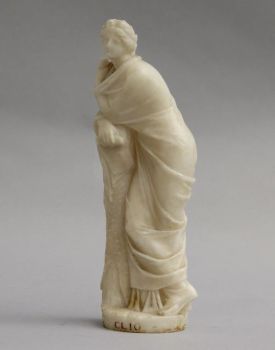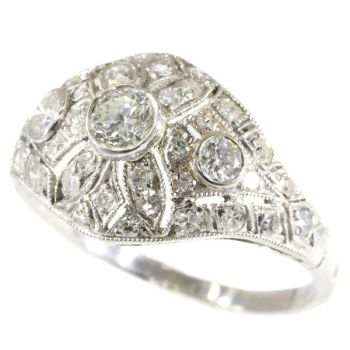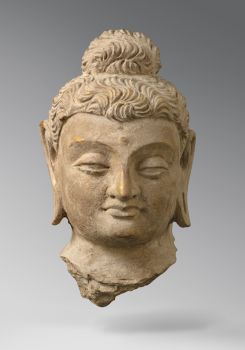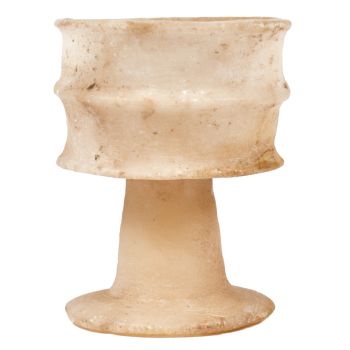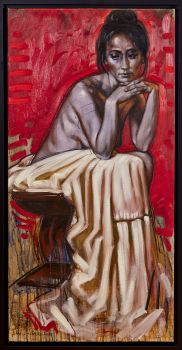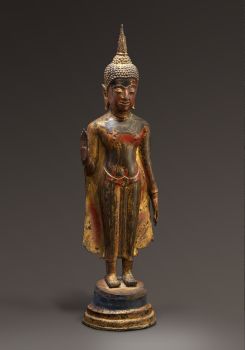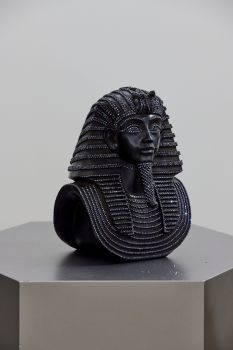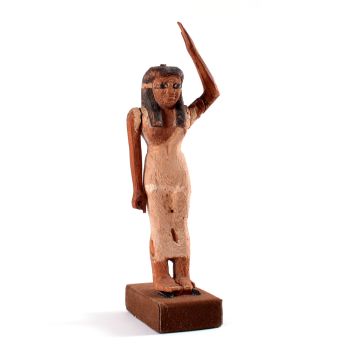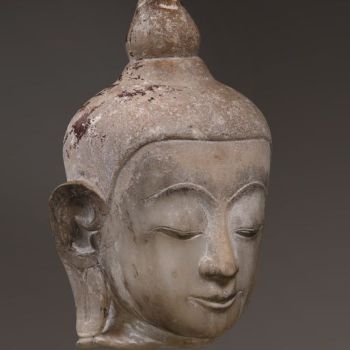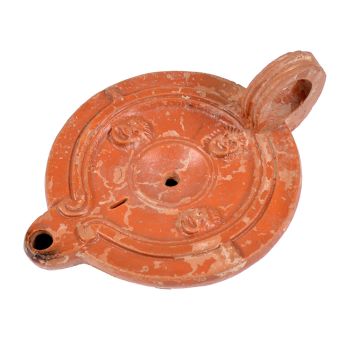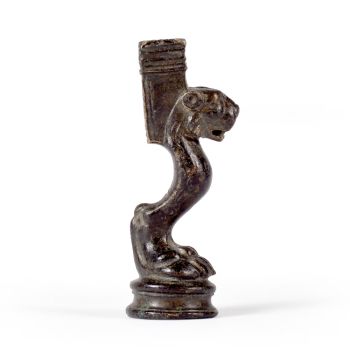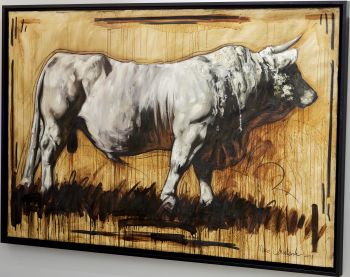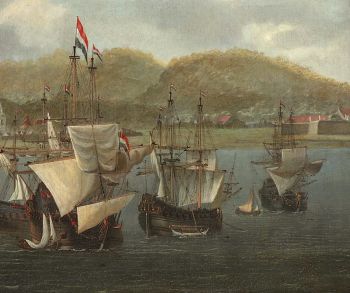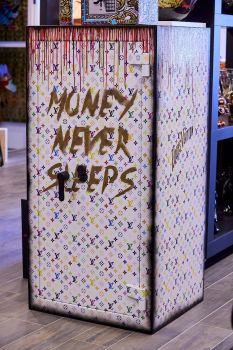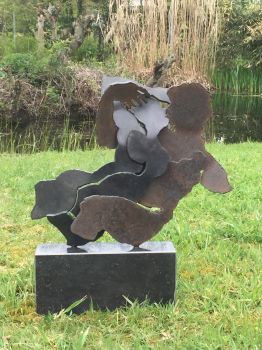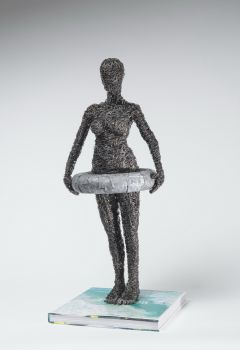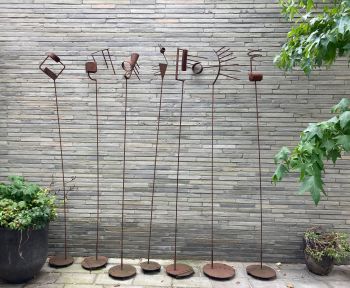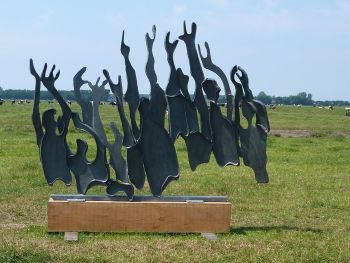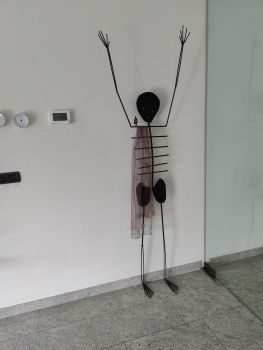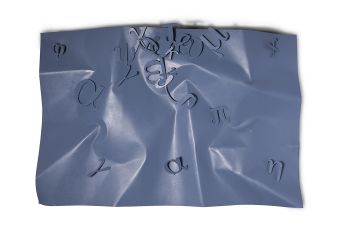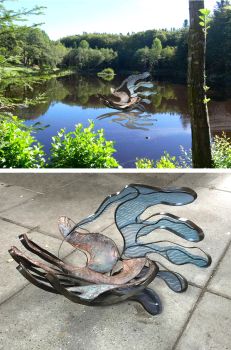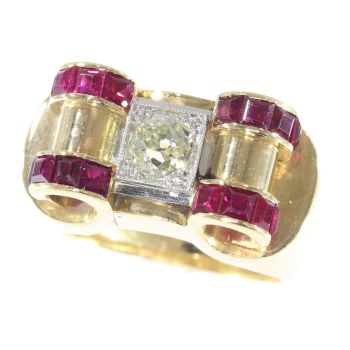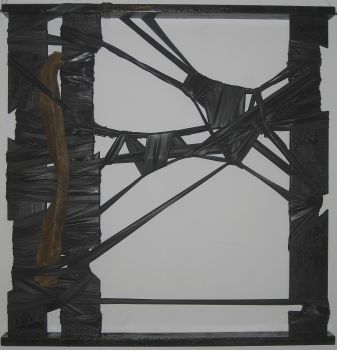A fine ruby inlaid iron, steel, silver, brass, gold Sinhalese Kasthane 1776
Onbekende Kunstenaar
IjzerRobijnStaalGoudMetaalEdelsteen
100 ⨯ 67 ⨯ 47 cm
Momenteel niet beschikbaar via Gallerease
Zebregs & Röell - Fine Art - Antiques
- Over kunstwerkA fine ruby inlaid iron, steel, silver, brass, gold Sinhalese Kasthane
Kingdom of Kandy, Sri Lanka (Ceylon), the blade marked VOC Amsterdam and dated 1776, the hilt late 18th century
L. 100.5 x W. 67 x H. 47 cm
A beautiful silver-mounted kasthāné with a narrow, curved blade with a single groove on each side. The blade bears the V.O.C. Amsterdam cipher on either side, with the year 1776. Many such marked blades are found all over the former colonies, including Sumatra and Java. It is unclear how they were obtained, as the V.O.C. was not officially selling the blades in these areas. Unlike many highly ornamental kasthāné that are purely ceremonial, this blade is a decent piece capable of actual use.
The silver hilt is typical Sinhalese. Cast out of two halves and worked to finer detail with chiselling in traditional Sinhalese motifs, with remains of parcel gilding. It has the large simha (lion) head pommel with ruby pupils set in gilt copper eyes. The grip is articulated with cutouts for the fingers, leading up to an octagonal gilt copper ferrule.
The crossbar terminates in a sérapéṅdiya on one side, the other side has a makara head from which the knucklebow emerges, which in turn ends in another sérapéṅdiya head. On the front of the knucklebow is a figure of Lakshmi, goddess of abundance and fortune. She is sat in the lotus position, holding two sprays of vegetation. Above the guard section emergy two makara heads, they neck leading their heads back towards the base of the blade.
The wooden scabbard is clad in silver, worked in repousse with traditional Sinhalese liya-vela, a decorative repetitive vegetal motif that sprouts from the head of a sérapéṅdiya near the tip. The scabbard endpiece is a highly stylized bird's head, with liya-pata, Sinhalese traditional curly elements.
The scabbard has a band in the middle beset with 13 pink rubies. Near the mouthpiece is engraved ".A:M.", repeated in the knucklebow. Possibly the initials of a previous owner. By the late 18th century, the western script was adopted in Sri Lanka as well, and male names often started with an A so it could have well been the initials of a local. The scabbard has four loops by which it was attached to a sash worn diagonally over the body.
A very nice example of a classic Sinhalese kasthāné of the silver type that was presented by the king of Kandy to Adigar at their appointment. It has the rare and desirable additions of a band of rubies on the scabbard and a dated, V.O.C. marked blade that put it firmly in the 18th century. In addition, there are initials that may help a future owner in further investigating the sword's context. - Over kunstenaar
Het kan voorkomen dat een kunstenaar of maker onbekend is.
Voor sommige werken is het niet te bepalen door wie het gemaakt is of dat het is gemaakt door (een groep) ambachtslieden. Voorbeelden zijn beelden uit de Oudheid, meubels, spiegels of handtekeningen die vaak niet duidelijk of leesbaar zijn. Maar ook sommige werken zijn helemaal niet gesigneerd.
Ook kunt u de volgende beschrijving vinden:
•"Toegeschreven aan …." waarschijnlijk een werk van de kunstenaar maar niet zeker of gedeeltelijk
•“Atelier van ….” of werkplaats van” een werk uitgevoerd in het atelier of atelier van de kunstenaar, eventueel onder zijn toezicht
•“Cirkel van ….” een werk uit de periode van de kunstenaar die zijn invloed laat zien, nauw verbonden met de kunstenaar maar niet noodzakelijkerwijs zijn leerling
•“Stijl van ….” of “Volger van ….” een werk uitgevoerd in de stijl van de kunstenaar, maar niet noodzakelijk door een leerling; kan eigentijds of bijna eigentijds zijn
•“Wijze van ….” een werk in de stijl van de kunstenaar maar van latere datum
•"Na …." een kopie (van welke datum dan ook) van een werk van de kunstenaar
•“Getekend…”, “Gedateerd….” of “Ingeschreven” dan is het werk gesigneerd/ gedateerd/ ingeschreven door de kunstenaar. De toevoeging van een vraagteken duidt op een element van twijfel
•"Met handtekening ...", "Met datum ...", "Met opschrift..." of “Draagt signatuur/datum/opschrift” dan is de handtekening/datum/opschrift toegevoegd door iemand anders dan de kunstenaar
Bent u geïnteresseerd om dit kunstwerk te kopen?
Artwork details
Related artworks
Onbekende Kunstenaar
A SMALL IVORY NETSUKE OF A DUTCHMAN WITH A DRUM1750 - 1800
Prijs op aanvraagZebregs & Röell - Fine Art - Antiques
1 - 4 / 12Onbekende Kunstenaar
The bell of the VOC fortress in Jaffna, Sri Lanka1747
Prijs op aanvraagZebregs & Röell - Fine Art - Antiques
 Gecureerd door
Gecureerd doorDanny Bree
1 - 4 / 16Onbekende Kunstenaar
Hollanders in Miniatuur18th century
Prijs op aanvraagZebregs & Röell - Fine Art - Antiques
Onbekende Kunstenaar
Dutchmen in miniature (Netsuke)1700 - 1900
Prijs op aanvraagZebregs & Röell - Fine Art - Antiques
Onbekende Kunstenaar
EEN VERGULD-ZILVER SRI LANKAANSE DOCUMENTEN ROLCONTAINER19th century
Prijs op aanvraagZebregs & Röell - Fine Art - Antiques
Onbekende Kunstenaar
Japanese transition-style lacquer coffer 1640 - 1650
Prijs op aanvraagZebregs & Röell - Fine Art - Antiques
Onbekende Kunstenaar
AN IVORY NETSUKE OF A DUTCHMAN FROLICKING WITH A SMALL BOY18th century
Prijs op aanvraagZebregs & Röell - Fine Art - Antiques
Onbekende Kunstenaar
EEN IVOREN NETSUKE VAN EEN NEDERLANDER MET EEN HAAN18th century
Prijs op aanvraagZebregs & Röell - Fine Art - Antiques
1 - 4 / 24Onbekende Kunstenaar
Een Gotische zuidelijke Nederlanden wandklok1580 - 1590
Prijs op aanvraagNico van den Assem restauratie
1 - 4 / 24Onbekende Kunstenaar
A large wall map of Asia by Nicolas de Fer 1647 - 1720
Prijs op aanvraagZebregs & Röell - Fine Art - Antiques
Onbekende Kunstenaar
AN UNUSUAL INDONESIAN LOBBED SILVER DISHlate 17th
Prijs op aanvraagZebregs & Röell - Fine Art - Antiques
Onbekende Kunstenaar
The Stamford Raffles Secretaires.1800 - 1813
Prijs op aanvraagZebregs & Röell - Fine Art - Antiques
Onbekende Kunstenaar
EEN IVOREN NETSUKE VAN EEN NEDERLANDER MET EEN HAAN18th century
Prijs op aanvraagZebregs & Röell - Fine Art - Antiques
1 - 4 / 12

